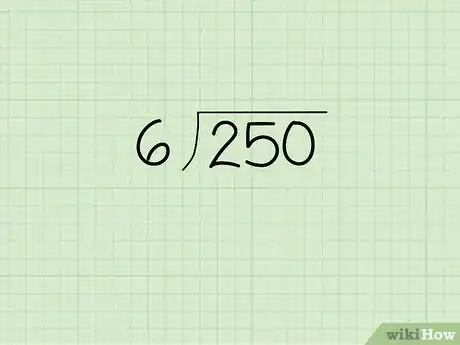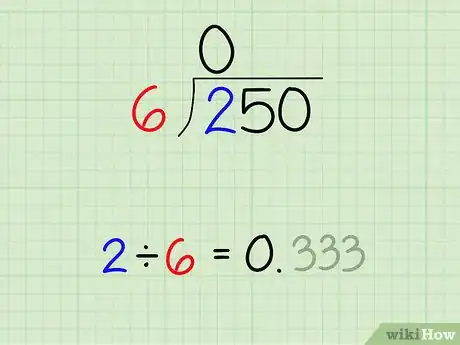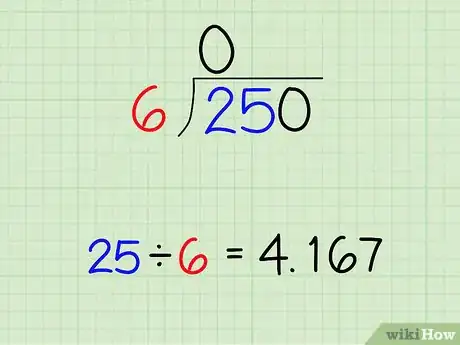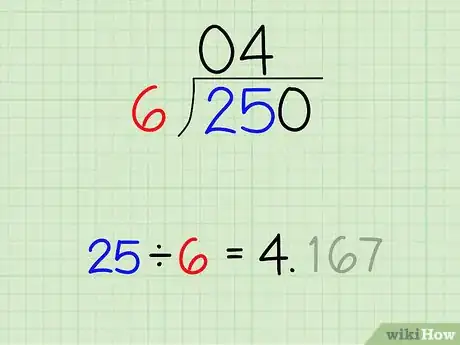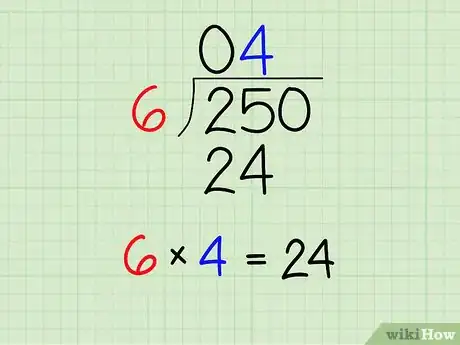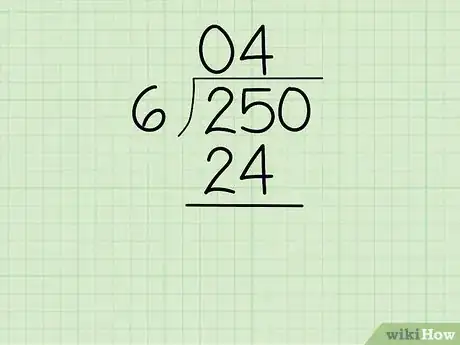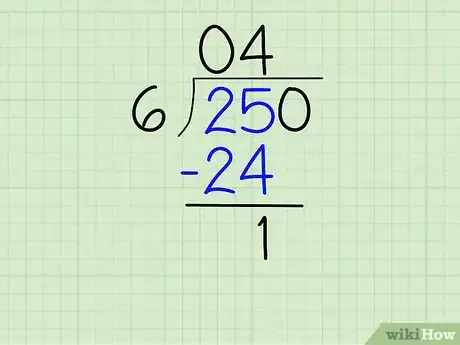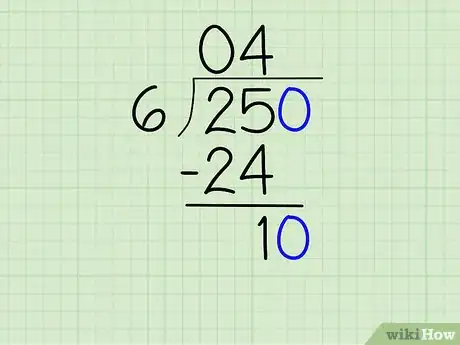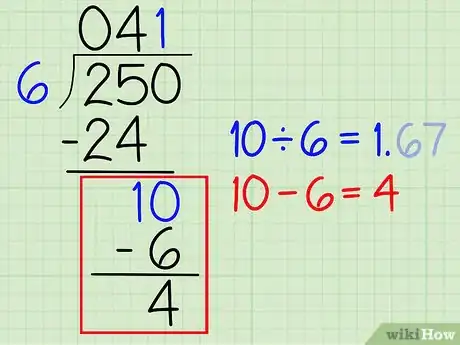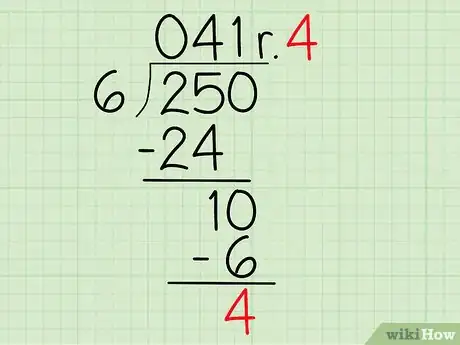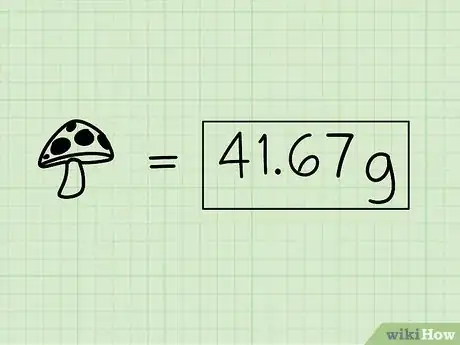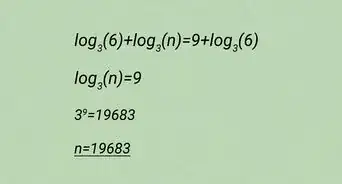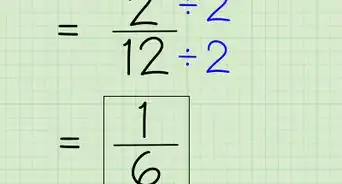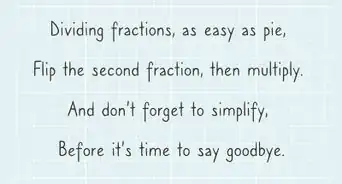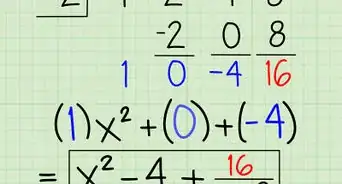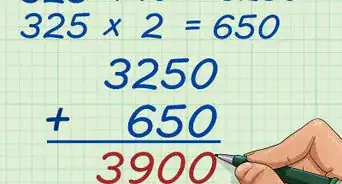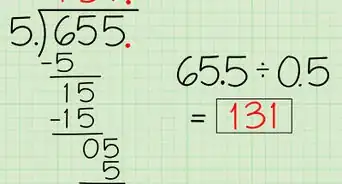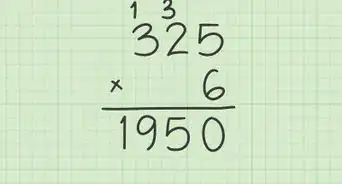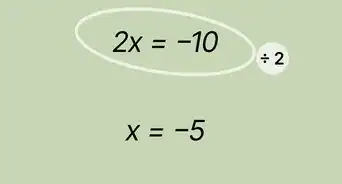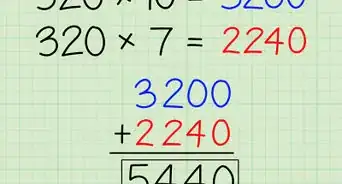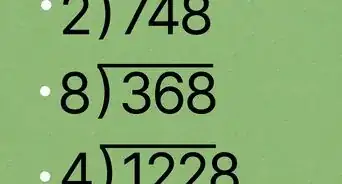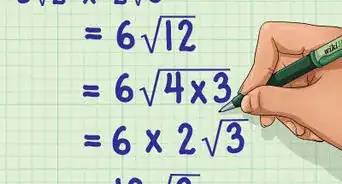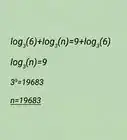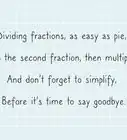wikiHow is a “wiki,” similar to Wikipedia, which means that many of our articles are co-written by multiple authors. To create this article, 153 people, some anonymous, worked to edit and improve it over time.
There are 8 references cited in this article, which can be found at the bottom of the page.
This article has been viewed 3,540,689 times.
Learn more...
A part of basic arithmetic, long division is a method of solving and finding the answer and remainder for division problems that involve numbers with at least two digits. Learning the basic steps of long division will allow you to divide numbers of any length, including both integers (positive,negative and zero) and decimals. This process is an easy one to learn, and the ability to do long division will help you sharpen and have more understanding of mathematics in ways that will be beneficial both in school and in other parts of your life.[1]
Steps
Dividing
-
1Set up the equation. On a piece of paper, write the dividend (number being divided) on the right, under the division symbol, and the divisor (number doing the division) to the left on the outside.[2]
- The quotient (answer) will eventually go on top, right above the dividend.
- Leave yourself plenty of space below the equation to carry out multiple subtraction operations.
- Here's an example: if there are six mushrooms in a 250-gram pack, how much does each mushroom weigh on average? In this case, we must divide 250 by 6. The 6 goes on the outside, and the 250 on the inside.
-
2Divide the first digit. Work from left to right, and determine how many times the divisor can go into the first digit of the dividend without exceeding it.
- In our example, you'd want to determine how many times 6 goes into 2. Since six is larger than two, the answer is zero. If you wish, may write a 0 directly above the 2 as a place-holder, and erase it later. Alternatively, you can leave that space blank and move on to the next step.
Advertisement -
3Divide the first two digits. If the divisor is a larger number than the first digit, determine how many times the divisor goes into the first two digits of the dividend without exceeding it.
- If your answer to the previous step was 0, as in the example, expand the number by one digit. In this case, we'd ask how many times 6 can go into 25.
- If your divisor has more than two digits, you'll have to expand out even further, to the third or maybe even fourth digit of the dividend in order to get a number that the divisor goes into.
- Work in terms of whole numbers. If you use a calculator, you'll discover that 6 goes into 25 a total of 4.167 times. In long division, you always round down to the nearest whole number, so in this case, our answer would be 4.
-
4Enter the first digit of the quotient. Put the number of times the divisor goes into the first digit (or digits) of the dividend above the appropriate digit(s).[3]
- It is important in long division to make sure the columns of numbers remain correctly aligned. Work carefully, otherwise you may make an error that leads you to the wrong answer.
- In the example, you would place a 4 above the 5, since we're putting 6 into 25.
Multiplying
-
1
-
2Record the product. Put the result of your multiplication in step 1 beneath the dividend.
- In the example, 6 times 4 is 24. After you've written a 4 in the quotient, write the number 24 beneath the 25, again being careful to keep the numbers aligned.[5]
-
3Draw a line. A line should be placed beneath the product of your multiplication, 24 in the example.
Subtracting
-
1Subtract the product. Subtract the number you just wrote below the dividend from the digits of the dividend directly above it. Write the result beneath the line you just drew.[6]
- In the example, we'll subtract 24 from 25, getting 1.
- Do not subtract from the complete dividend, but only those digits you worked with in Parts One and Two. In the example, you should not subtract 24 from 250.
-
2Bring down the next digit. Write the next digit of the dividend after the result of your subtraction operation.[7]
- In the example, because 6 can't go into 1 without exceeding it, you need to bring down another digit. In this case, you'll grab the 0 from 250 and place it after the 1, making it 10, which 6 can go into.
-
3Repeat the whole process. Divide the new number by your divisor, and write the result above the dividend as the next digit of the quotient.[8]
- In the example, determine how many times 6 can go into 10. Write that number (1) into the quotient above the dividend. Then multiply 6 by 1, and subtract the result from 10. You should end up with 4.
- If your dividend has more than three digits, keep repeating this process until you've worked through all of them. For example, if we we had started with 2,506 grams (88.4 oz) of mushrooms, we'd pull the 6 down next and place it next to the four.
Remainders and Decimals
-
1Record the remainder. Depending on what you're using this division for, you may want to finish up with a quotient that's a whole number, with a remainder, i.e. an indication of how much is left over after you've completed your division.[9]
- In the example, the remainder would be 4, because 6 cannot go into four, and there are no more digits to bring down.
- Place your remainder after the quotient with a letter "r" before it. In the example, the answer would be expressed as "41 r4."
- You would stop here if you were trying to calculate something that would not make sense to express in partial units, for example, if you were trying to determine how many cars were needed to move a certain number of people. In a case such as this, it would not be useful think about things in terms of partial cars or partial people.
- If you plan to calculate a decimal, you can skip this step.
-
2Add a decimal point. If you are planning to calculate a precise answer rather than one with a remainder, you'll now need to move beyond whole numbers. When you've reached a point at which you are left with a number smaller than your divisor, add a decimal point to both the quotient and the dividend.
- In the example, since 250 is a whole number, every digit after the decimal will be 0, making it 250.000.
-
3Keep repeating. Now you have more digits that can be brought down (all of them zeroes). Bring down a zero and continue as before, determining how many times the divisor can go into the new number.[10]
- In the example, determine how many times 6 can go into 40. Add that number (6) to the quotient above the dividend and after the decimal point. Then multiply 6 by 6, and subtract the result from 40. You should end up with 4 again.
-
4Stop and round. In some cases, you will find that when you start to solve for the decimal, the answer repeats over and over. At this point, it's time to stop and round your answer up (if the repeating number is 5 or greater) or down (if it is 4 or less).
- In the example, you could keep getting 4 out of 40-36 forever, and add 6's to your quotient indefinitely. Instead of doing this, stop the problem and round the quotient. Because 6 is greater than (or equal to) 5, you would round up to 41.67.
- Alternatively, you can indicate a repeating decimal by placing a small horizontal line over the repeating digit. In the example, this would make the quotient 41.6, with a line over the 6.[11]
-
5Add the unit back to your answer. If you are working with units like pounds, gallons, or degrees, once you are done with all your calculations, add the unit to the end of your answer.
- If you added a zero as a place-holder at the beginning, you should erase that now as well.
- In the example, because you asked how much each mushroom in a 250-gram pack of 6 weighs, you'll need to put your answer into grams. Therefore, your final answer is 41.67 grams.
Practice Problems and Answers
Community Q&A
-
QuestionHow do you do long division on a calculator?
 wikiHow Staff EditorThis answer was written by one of our trained team of researchers who validated it for accuracy and comprehensiveness.
wikiHow Staff EditorThis answer was written by one of our trained team of researchers who validated it for accuracy and comprehensiveness.
Staff Answer wikiHow Staff EditorStaff AnswerDoing long division on a calculator is easy. Simply enter the dividend (the number you’re dividing), hit the ÷ key, and then enter the divisor (the number you’re dividing by). If there’s a remainder, it will be written as a decimal in the answer. If there are multiple decimal places, round up to the nearest 1 or 2 places after the decimal point.
wikiHow Staff EditorStaff AnswerDoing long division on a calculator is easy. Simply enter the dividend (the number you’re dividing), hit the ÷ key, and then enter the divisor (the number you’re dividing by). If there’s a remainder, it will be written as a decimal in the answer. If there are multiple decimal places, round up to the nearest 1 or 2 places after the decimal point. -
QuestionCan I do long division with polynomials?
 wikiHow Staff EditorThis answer was written by one of our trained team of researchers who validated it for accuracy and comprehensiveness.
wikiHow Staff EditorThis answer was written by one of our trained team of researchers who validated it for accuracy and comprehensiveness.
Staff Answer wikiHow Staff EditorStaff AnswerYes! Check out the long division section of our article on How to Divide Polynomials.
wikiHow Staff EditorStaff AnswerYes! Check out the long division section of our article on How to Divide Polynomials. -
QuestionHow do you do long division when the divisor has 2 digits?
 wikiHow Staff EditorThis answer was written by one of our trained team of researchers who validated it for accuracy and comprehensiveness.
wikiHow Staff EditorThis answer was written by one of our trained team of researchers who validated it for accuracy and comprehensiveness.
Staff Answer wikiHow Staff EditorStaff AnswerIt’s essentially the same process that you would use with a divisor of only 1 digit, except you will need to place a leading 0 at the top of the division sign. For example, if you’re dividing 360 by 25, you would start by putting a 0 over the 3, since 25 is larger than 3. The remainder is 3, so bring down the 6 to make 36. 25 goes into 36 once, so write a 1 at the top of the division sign over the 6. Subtract 25 from 36 to get the remainder 11. Bring down the 0 to get 110. 25 goes into 110 4 times, so write a 4 over the 0 at the top of the division sign. Subtract 100 from 110 to get the remainder 10, which you can divide by 25 to get the decimal .4. The answer is 14.4.
wikiHow Staff EditorStaff AnswerIt’s essentially the same process that you would use with a divisor of only 1 digit, except you will need to place a leading 0 at the top of the division sign. For example, if you’re dividing 360 by 25, you would start by putting a 0 over the 3, since 25 is larger than 3. The remainder is 3, so bring down the 6 to make 36. 25 goes into 36 once, so write a 1 at the top of the division sign over the 6. Subtract 25 from 36 to get the remainder 11. Bring down the 0 to get 110. 25 goes into 110 4 times, so write a 4 over the 0 at the top of the division sign. Subtract 100 from 110 to get the remainder 10, which you can divide by 25 to get the decimal .4. The answer is 14.4.
References
- ↑ http://www.csun.edu/~vcmth00m/longdivision.pdf
- ↑ http://www.wtamu.edu/academic/anns/mps/math/mathlab/col_algebra/col_alg_tut36_longdiv.htm
- ↑ http://www.mathsonline.org/pages/longdiv.html
- ↑ http://www.wtamu.edu/academic/anns/mps/math/mathlab/col_algebra/col_alg_tut36_longdiv.htm
- ↑ http://www.mathsonline.org/pages/longdiv.html
- ↑ http://www.bbc.co.uk/schools/gcsebitesize/maths/number/multiplicationdivisionrev2.shtml
- ↑ http://www.mathsonline.org/pages/longdiv.html
- ↑ http://www.wtamu.edu/academic/anns/mps/math/mathlab/col_algebra/col_alg_tut36_longdiv.htm
- ↑ http://www.mathsisfun.com/long_division2.html
About This Article
To do long division, follow these seven steps:
Step 1. Calculate how many times the number outside the division bar goes into the first number inside the bar.
Step 2. Put the answer on top of the bar.
Step 3. Multiply the number outside the division bar by the number at the top of the bar.
Step 4. Write the answer below the number inside the division bar, so the first digits of both numbers are lined up.
Step 5. Subtract the two numbers inside the division bar and write the answer below the two numbers. If there are any remaining digits inside the division bar, bring them down to the new answer.
Step 6. Repeat the division process with the new number.
Step 7: If you get to a point where the number outside the division bar can’t fit into the remaining number, write that number, also known as the remainder, next to your answer with an “r” in front of it.
